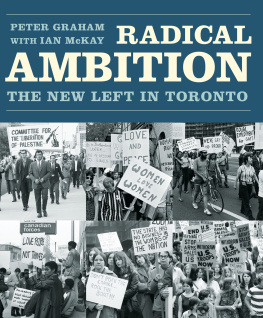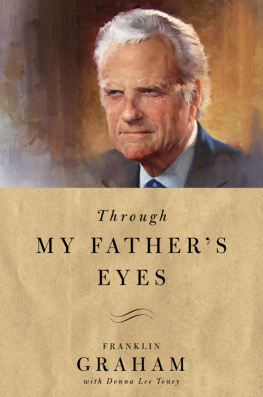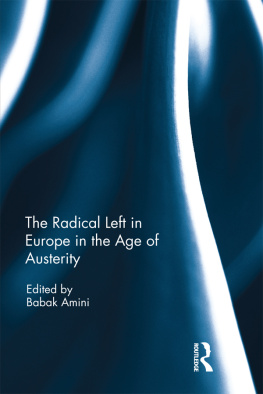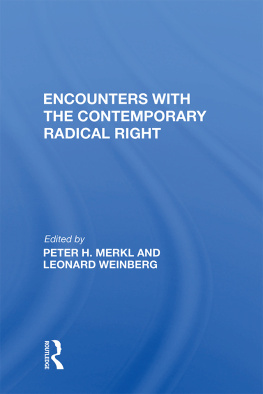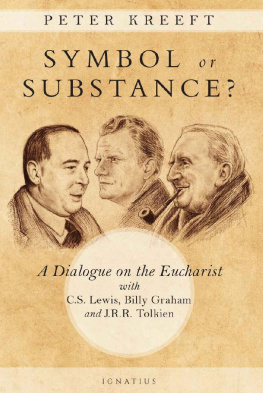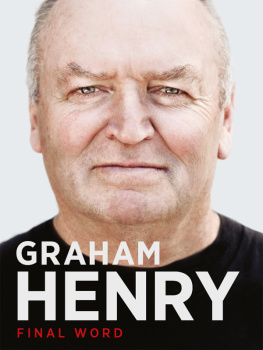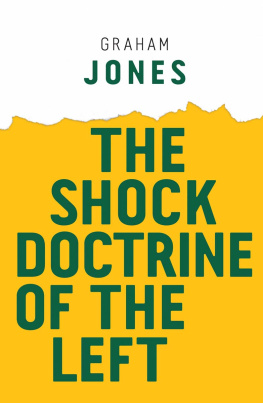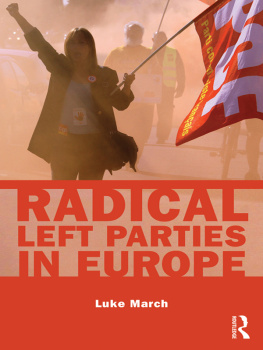Acknowledgements
1: Toronto: Capital of Capitalist Modernity
2: A Slow, Cautious Hello: First Stirrings of a Movement, 195864
3: A Movement Emerges, 196567
4: Out of the Meat Grinder: Confronting the Educational Leviathan, 196871
5: Bringing the Revolution Home: Black Power, Feminism, and Turning the Local into the Global, 196871
6: Obsolete Communism and Conflicting Visions? Wafflers, Liberals, and New Leninists, 196871
7: We Must All Be Politicians: Urban Resistance and the Turn to Community, 197178
8: Without WallsNo Ceiling: A Cultural Revolution, 197178
9: Subaltern Identities, Universal Truths, Transnational Complexities: The Rise of Identity-Based Resistance, 197178
10: New Leninists and New Constellations: In Quest of the Revolutionary Party, 197182
11: A Long, Ambiguous Goodbye, 198285
Notes
Reading Further
Index
Graham and McKay deliver a superb and comprehensive overview of the Toronto new left in the long 1960s. Like similar moments in the 1880s and the 1930s, the 1960s represented a high point of anti-capitalist struggle with innovative forms of resistance which rippled through Canadian society and culture. From the early anti-nuclear, civil rights, student, and anti-war movements to the new Trotskyist and Maoist formations, the fight for the environment, and the emergence of Black, Indigenous, womens, and gay liberation movements, the new left experience still resonates with a re-emergent socialist politics.
Gregory S. Kealey, professor emeritus, University of New Brunswick
Radical Ambitions phenomenal evocation of the dynamic and tumultuous new left in Toronto in the last great wave of radicalization, and its assessments of the dead ends and enduring legacies of that time, provide extraordinary insight into what can be re-imagined and reworked into a politics for today.
Varda Burstyn, writer, activist and independent scholar, author of Water Inc. and The Rites of Men: Manhood, Politics and the Culture of Sport
What a remarkable book in terms of its depth and breadth. It captures the tenor, tone and tensions of radical Toronto politics with its local, national and international permutations; and in relation to socialism, gender, race, class, sexuality. This textured and layered study captures the radical spirit of the sixties through to the eighties, shattering the myth of Canadian innocence while making a unique contribution to global radical history, documenting a sense of hope and resistance at a time when a radical shift in the practice of politics is in dire need.
David Austin, author of Moving Against the System, Dread Poetry and Freedom, and Fear of a Black Nation
Graham and McKay bring the periods activists to life and manage to balance the numerous political differences and lines of demarcation insightfully. The authors analyse not only political organizationsfrom the Waffle/NDP to the Maoist party formationsbut also the various municipal struggles around expressways and education, the anti-war movement, and the movements around identity and sexuality. It even includes an account of the cultural left, a topic often overlooked in political histories. One of a new crop of engaging Toronto histories coming out of BTL. Local and world class. History otherwise.
Carole Cond and Karl Beveridge, visual artists, authors, and activists
Acknowledgements
Peter would like to acknowledge the many Windsor, Ont., activists who mentored him in activism and encouraged his interest in left-wing history. He would particularly like to thank Mike McLister and other movement veterans who introduced him to the inspiring social movement activity of the 1970s. He is grateful to the scholars who helped him along the way, including York Universitys Geoffrey Ewen and Marcel Martel, and Queens Universitys Jeff Brison and Peter Campbell, as well as the activists who agreed to be interviewed for his doctoral thesis. He is indebted to his co-author and former Ph.D. supervisor Ian McKay, whose towering knowledge of left-wing history, invaluable advice, and heartening support made this book possible. He is also thankful for the enduring support of his parents, Judith and Skip, and his partner, Yen, who encouraged him to enrol in university and write about his research. Yen had to endure hearing an excessive amount of interesting historical anecdotes during the production of this book, which is dedicated to her.
Ian would especially like to thank his co-author Peter Graham for allowing him the opportunity to add his two cents worth to the outstanding doctoral work that forms the basis of this study. He is also grateful to his partner, Rob, for patiently living with a preoccupied author and to the Wilson Institute for Canadian History at McMaster for offering a congenial setting for progressive scholarship.
We would both like to recognize activists like Charles Dobie, Pat Leslie, and Jearld Mordenhauer, who have helped to document the social movements we study herein. This book would also not have been possible without the help of a veritable army of archivists and librarians; we especially thank those at the Canadian Lesbian and Gay Archives, Clara Thomas Archives and Special Collections, University of Ottawa Archives and Special Collections, and William Ready Division of Archives and Research Collections. We thank the staff of Between the Lines for their many hours of work on this book; and acknowledge the sterling editorial work of Robert Clarke, who has once again revealed why he is considered one of the Canadian lefts most treasured assets.
1
Toronto: Capital of Capitalist Modernity
To be modern is to live a life of paradox and contradiction. It is to be overpowered by the immense bureaucratic organizations that have the power to control and often to destroy all communities, values, lives; and yet to be undeterred in our determination to face these forces, to fight to change the world and make it our own. It is to be both revolutionary and conservative: alive to new possibilities for experience and adventure, frightened by the nihilistic depths to which so many modern adventures lead, longing to create and to hold on to something real even as everything melts.
Marshall Berman, All That Is Solid Melts into Air
Writing for Macleans magazine in 1965, Peter Gzowski saw something different about the new generation of the left. They were not the agrarian radicals of old. They did not meet in union halls. Nor were they like the Beatniks that Gzowski had rubbed shoulders with in college. THE RADICALS of the New Left, the young men and women... differ from their predecessors not only in the degree of their protest but in its kind. They are a new breed.
Members of the new left, women and menthis new breed of radicalsplaced the ideals of self-determination and community at the core of their politics. As with all leftists, they sought to transcend capitalism. But in contrast to older formations, new leftists emphasized solidarity with national liberation movements challenging imperialism around the world. They took up organizational forms that anticipatedprefigured, some saidin their direct, grassroots, community-based democracy, the liberated world of the future. Their ideals encouraged power relations that nurtured and respected struggles by men, women, and youth to achieve meaning and authenticity in their personal livesa trait that encouraged them often to focus on the cultural sphere. They took their chances within movements that were actually (and not just formally) predicated on egalitarianism. They had their radical ambitions, their oft-disputed problems, their broken promises, their achievements large and small. To varying degrees in the years 195885 the city of Toronto was one of North Americas leading centres of this new leftism.

